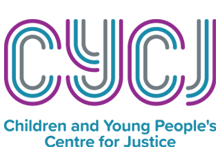This week is Victims’ Awareness Week, run by Victim Support Scotland. In this piece RJ Practice Development Advisor Pamela Morrison explores the ways in which a trauma-informed Restorative Appproach can empower those who have been caused harm, allowing them to heal and move forward.
Anyone can be affected by crime, at any point in their life. When people experience it, they often report dissatisfaction with the criminal justice system, even after the case has been dealt with through Court, and feel that their voices weren’t heard. Victim Support Scotland’s annual national awareness week provides the opportunity to pause and think about how we promote messages in support of people affected by crime by championing their voices, experiences and rights and ultimately improve their satisfaction.
To support the upholding of these rights and attempt to improve the experience for victims, the Scottish Government published a Restorative Justice Action plan. The action plan seeks to ensure that the needs of persons harmed – and their voices – are central, and supports a reduction in harmful behaviour across our communities. It states “Restorative Justice can lead to a route out of crime and provide closure and redress to victims and communities. We know that it can empower victims of crime and reduce offending.”
Restorative justice is value-led and focuses on the following questions: what has happened and what is it that matters to each of you that needs to be restored? Restorative justice focuses primarily on the specific act of harm that has brought the parties together and the subjective experience, understanding and wishes of each person affected by the harm. In that sense the process is designed to undo an injustice (Tim Chapman, 2021).
Restorative justice will always have more than one aim and therefore can have more than one outcome; there is a plethora of research which highlights the benefits of restorative processes for all parties involved. However as we pause to think about the experiences and rights of people who have been harmed, it is a good opportunity to highlight the benefits when they take part in a restorative process.
Most research indicates that restorative justice reduces the likelihood of reoffending; this benefits both the individual who has caused harm and the wider community, by preventing further victims. There is strong and consistent evidence that RJ benefits people subjected to harmful behaviour by others.
A report championing the rights of the victims of crime, Valuing Victims: A Review of Police and Crime Commissioners’ Delivery of Restorative Justice 2018/19, highlights significant benefits across several areas including:
- Establishing improved health and wellbeing
- Being better able to cope with aspects of life
- Having an increased feeling of safety
- Feeling better informed and empowered (Watson, 2020).
“I want him to be accountable to me, not to a judge, not to Police, not to a prison officer, to me”
The evidence also suggests that those who have taken part in a restorative justice process have a higher satisfaction level than those who have been involved in often more formal criminal justice proceedings (Latimer, Dowden, & Muide, 2005; Sherman & Strang, 2007; Strang & Sherman, 2015). Furthermore, those who engaged in a restorative justice process had fewer symptoms of post-traumatic stress and less fear of further victimisation. Arguably, restorative justice could be seen as a health intervention and may even sit better in such an arena, as a trauma-informed approach.
“Taking part in restorative justice was the key to open the door to my future.”
As we continue to deliver the Restorative Justice Action Plan in Scotland it is vital that we keep the voices, experiences and rights of those who have been harmed by others at the forefront of the work.
I hope that when Victim Awareness week comes next year we are closer to doing exactly this.
About our blogger
Pamela Morrison is the Restorative Justice Practice Development Advisor here at CYCJ. Read more.

Leave a Reply
You must be logged in to post a comment.